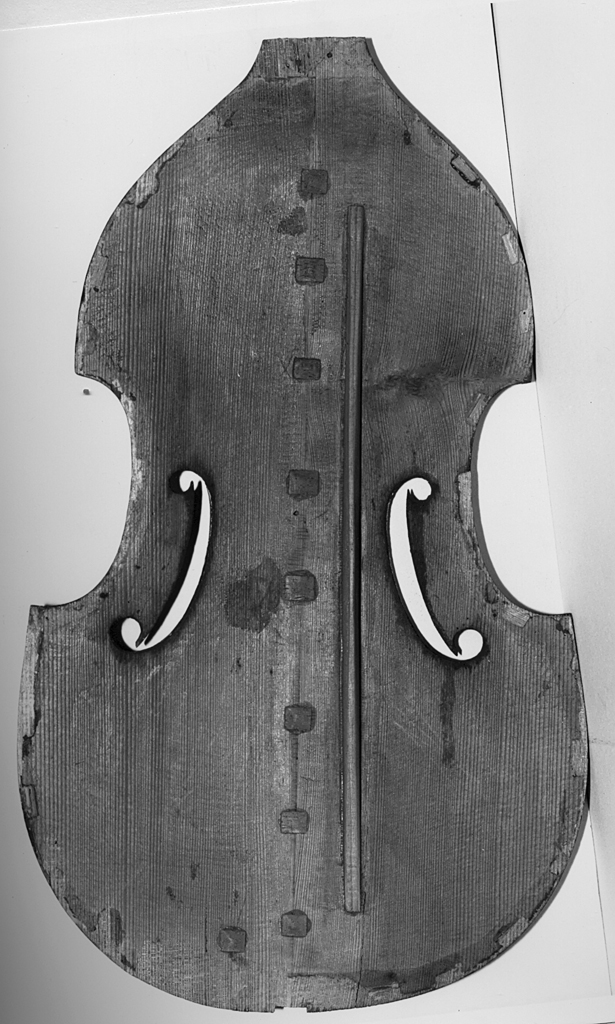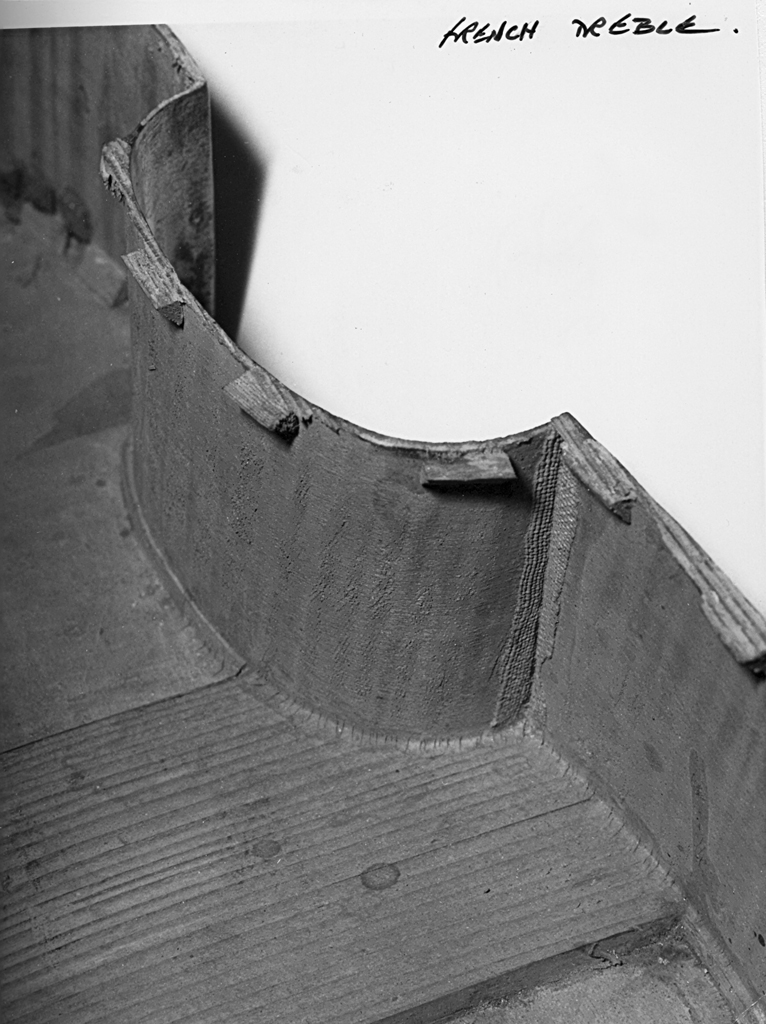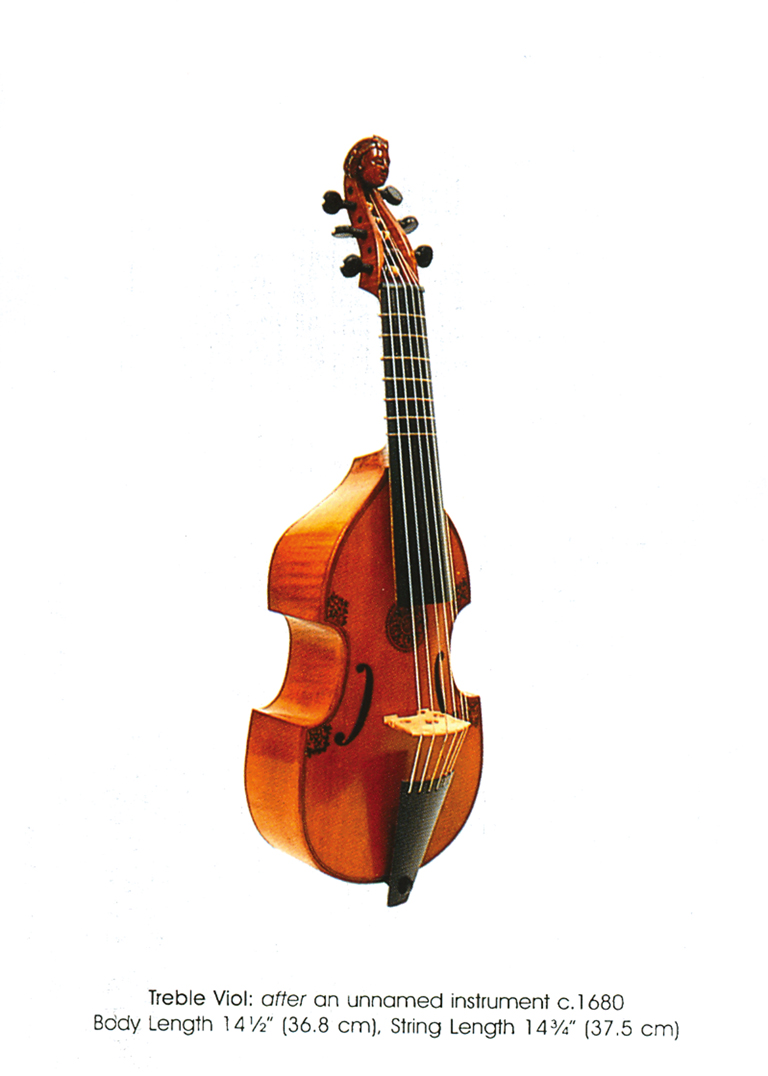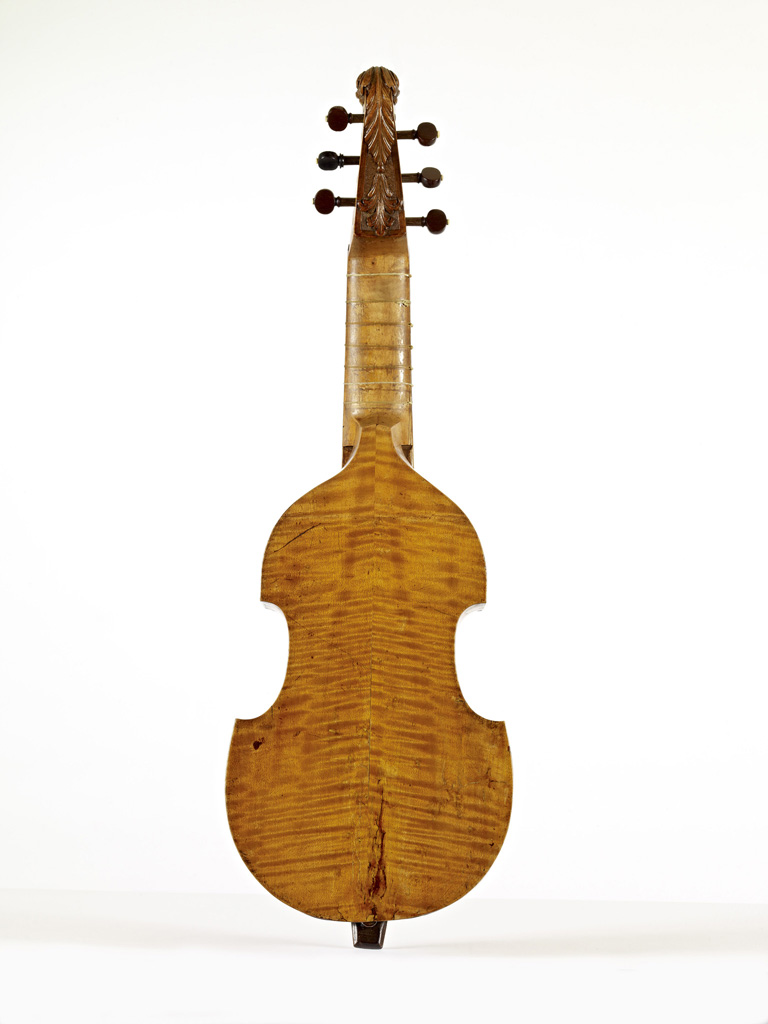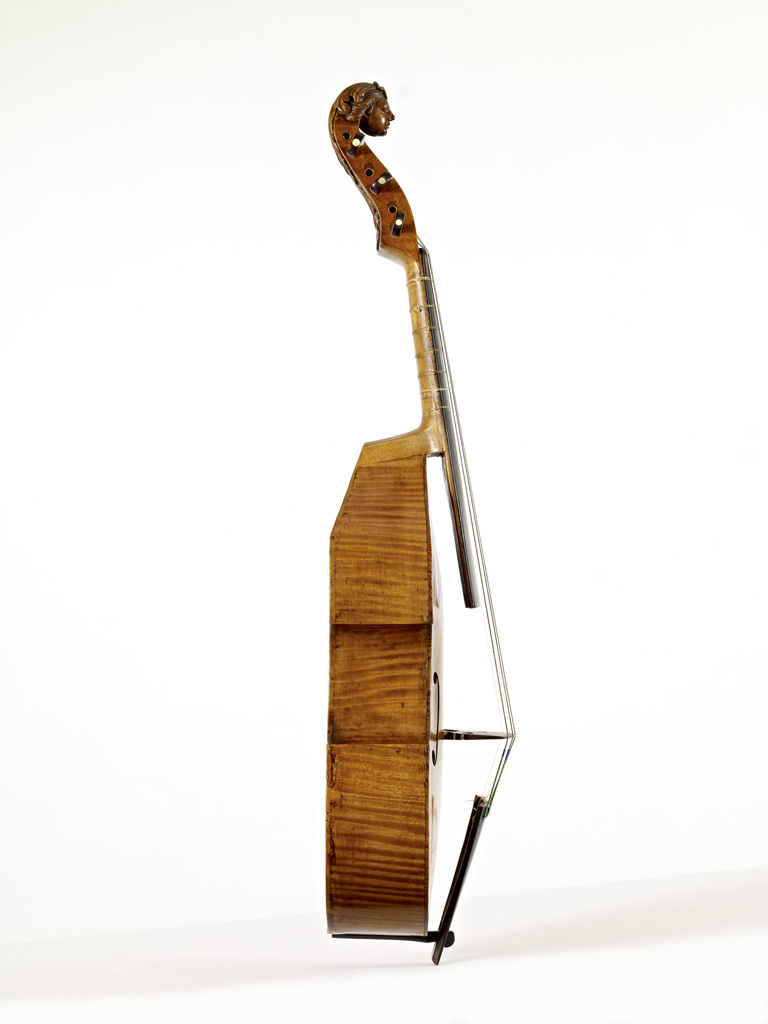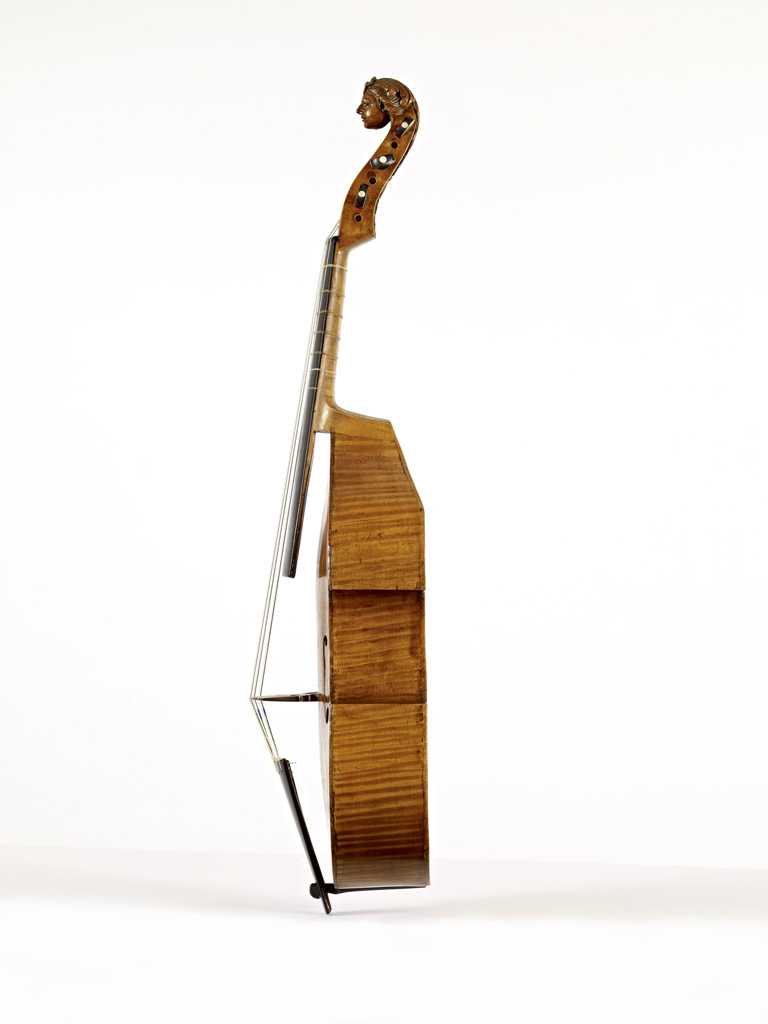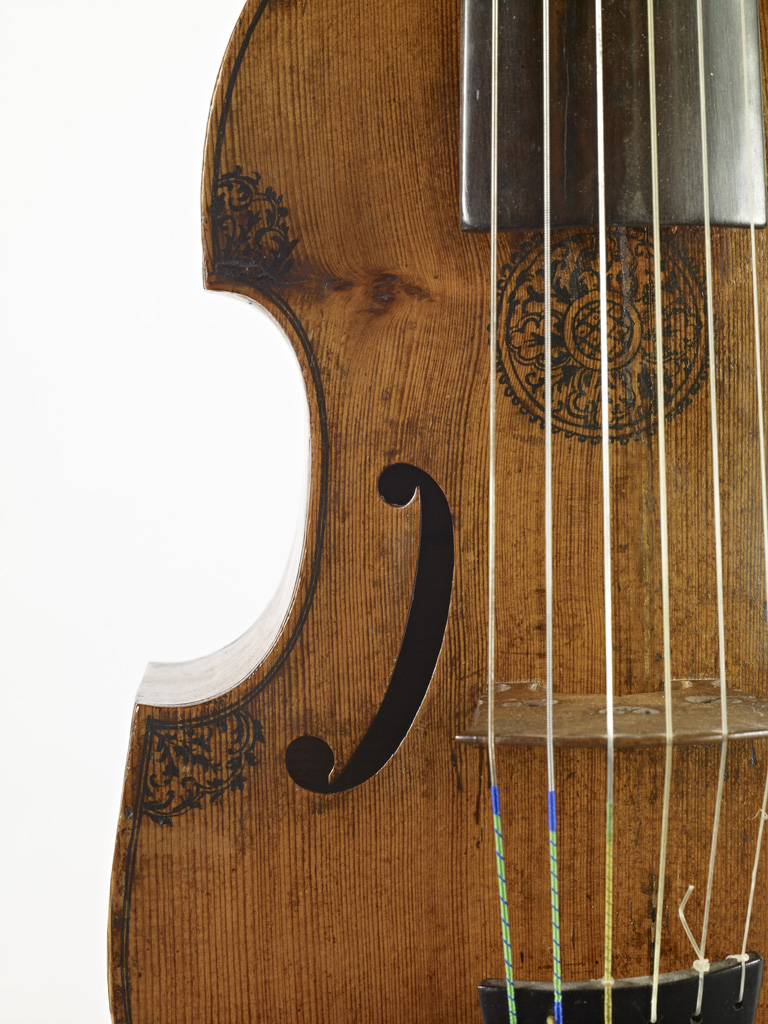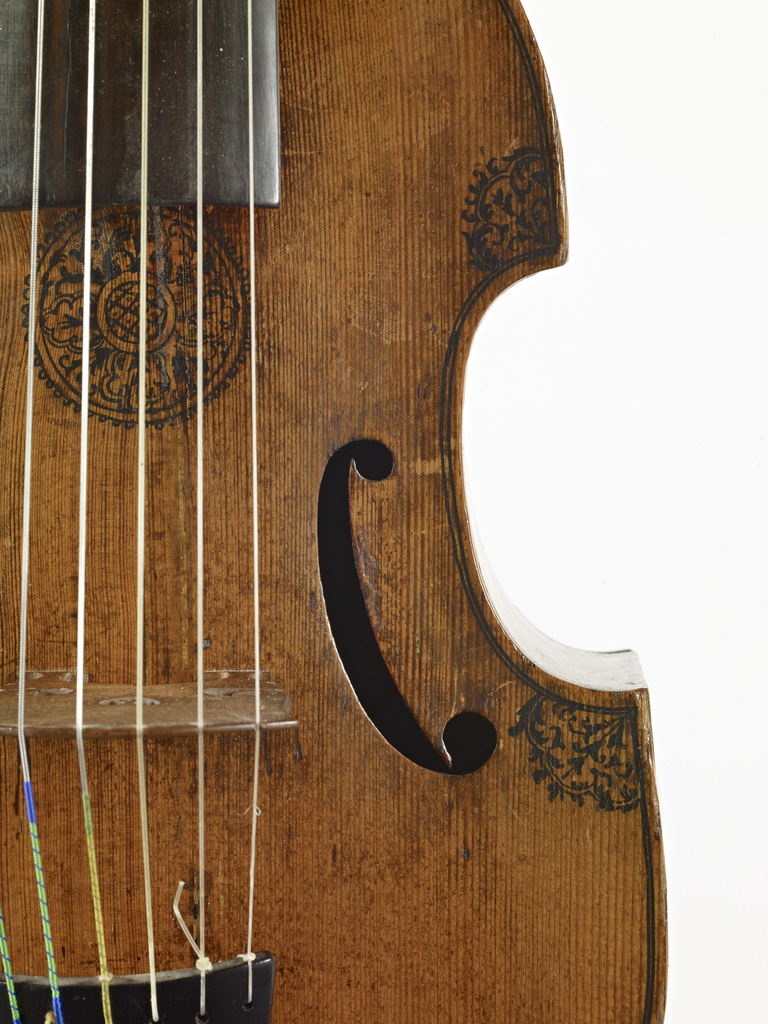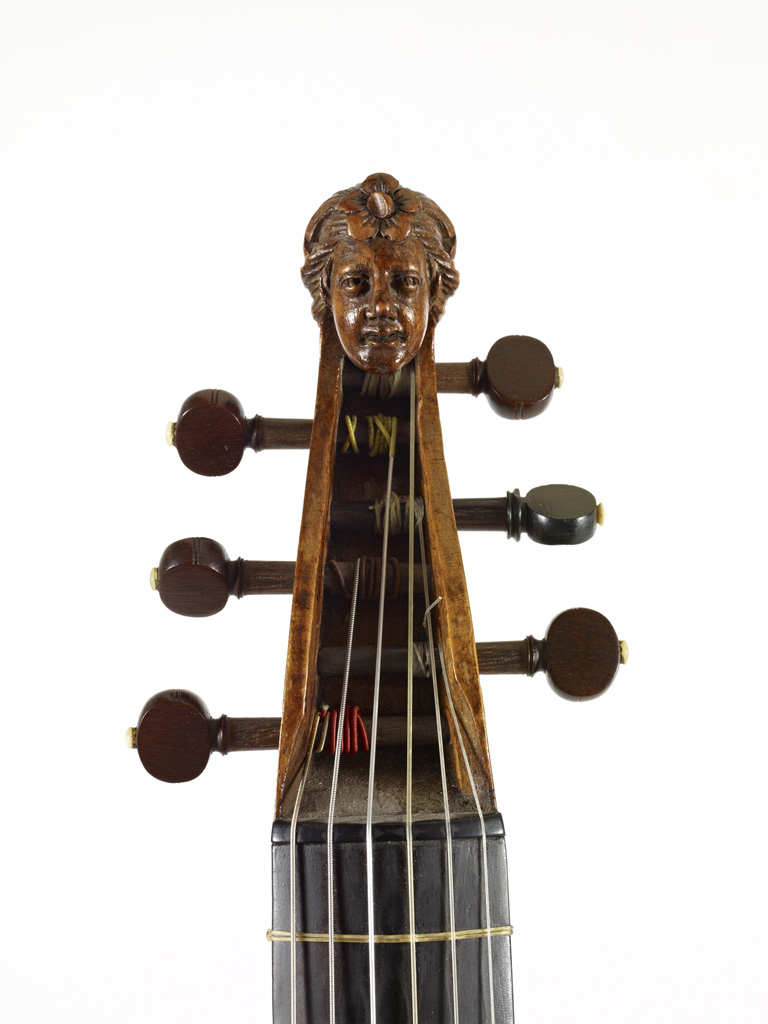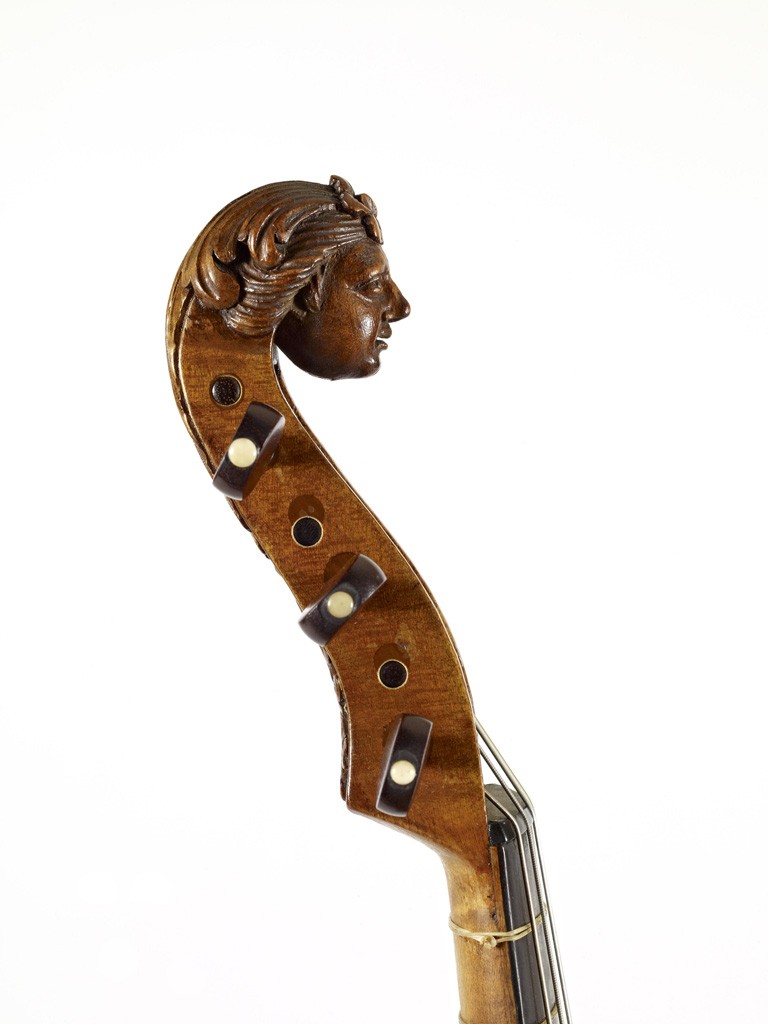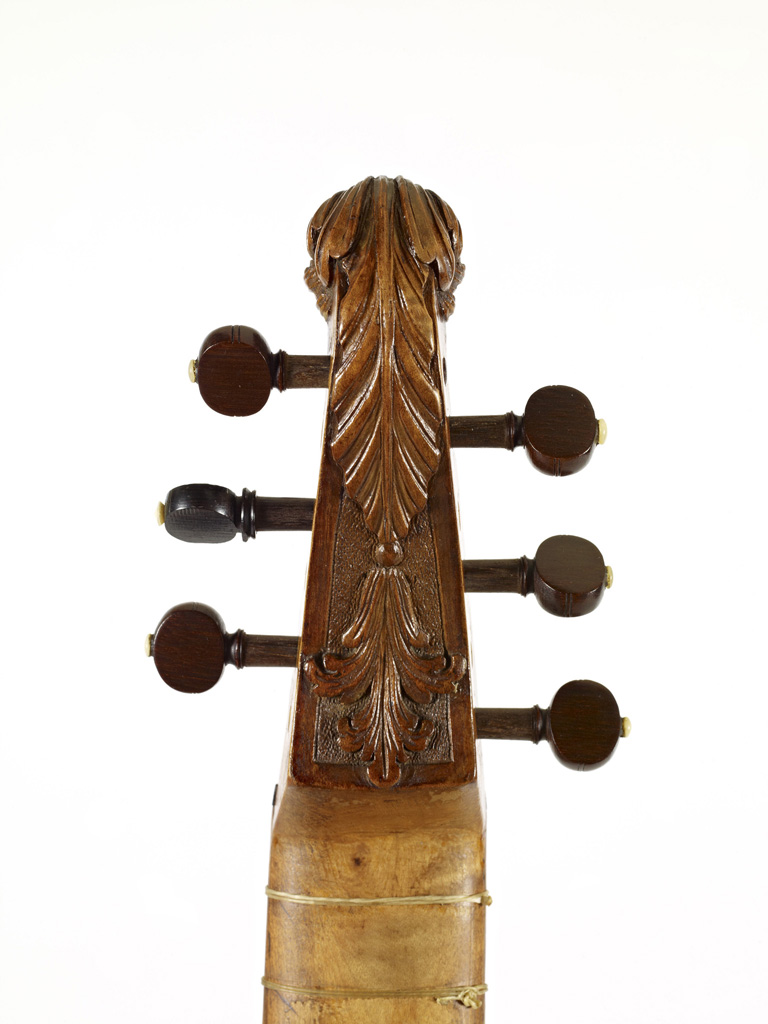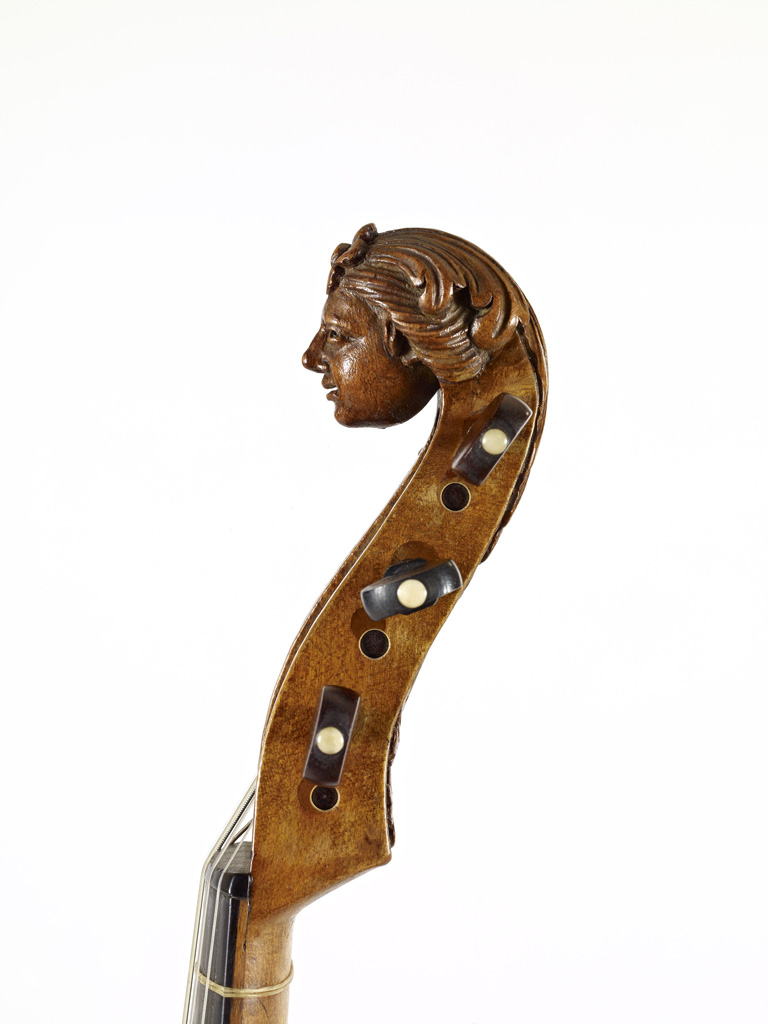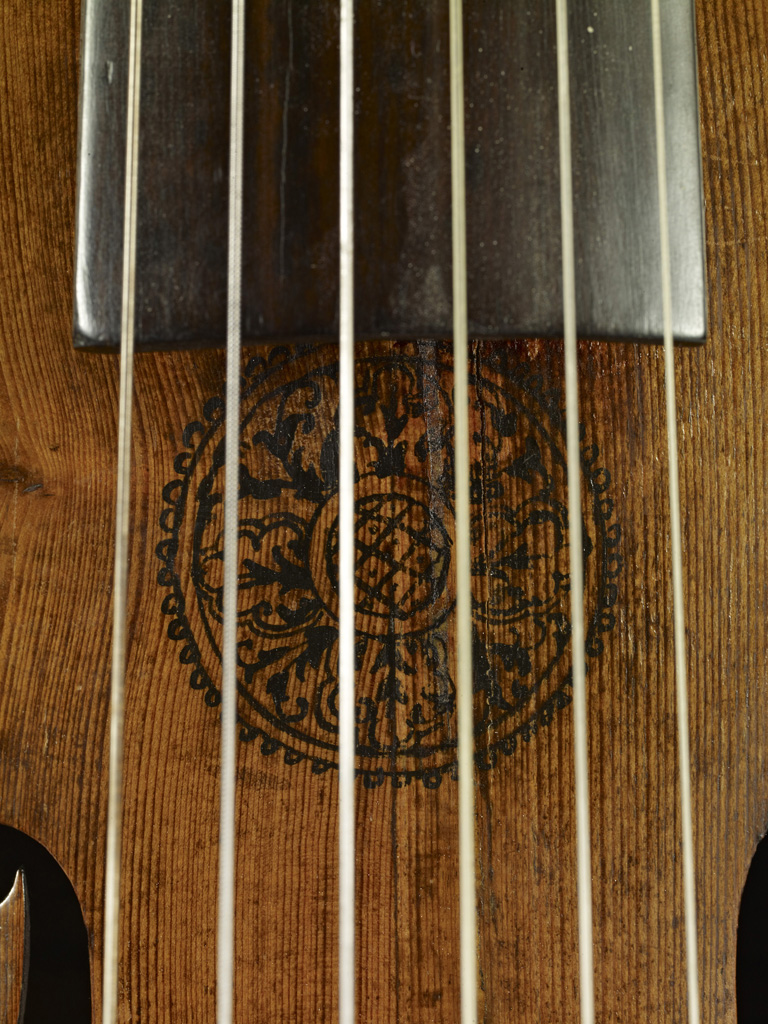The table is of two unmatched pieces, with knots above the bass soundhole, otherwise even grain with 12 to 8 growth rings per cm. The soundholes are C shaped.
The purfling is two lines of ink that in places are drawn rather carelessly unparallel. There is a circular arabesque design in ink below the end of the fingerboard, and similar quarter circles in each corner.
The back is of two pieces of maple with broad irregular flame sloping down from the center joint. There is no purfling.
The ribs are six pieces of similar wood, the flame sloping towards the neck on all but the center bass bout.
The original neck is of plain maple, integral with the head of a female wearing a flower and feather headdress. The back of the pegbox is carved with a leaf design with stippled ground. The sides are plain. Five of the six pegs appear to be original. They are dark brown with ivory pips.
The original fingerboard and tailpiece are maple with ebony veneer, and the hookbar is stained black.
The varnish is pale golden yellow.
Body length 36.9
Body width
upper bout 16.9
center bout 12.6
lower bout 21.3
String length 37.5
Rib height
top block 5.0
fold 6.8
upper corners 6.9
lower corners 6.9
bottom block 7.0
There is no label.
Bought in February 1974 from Tony Bingham, London


